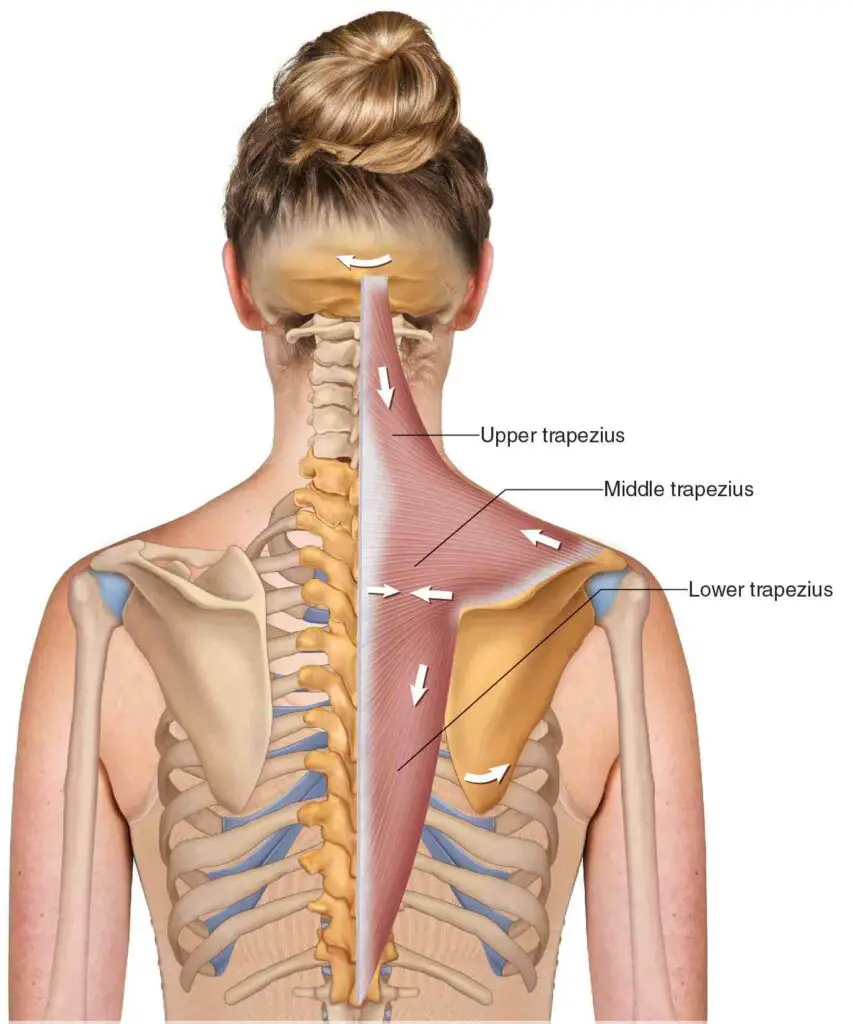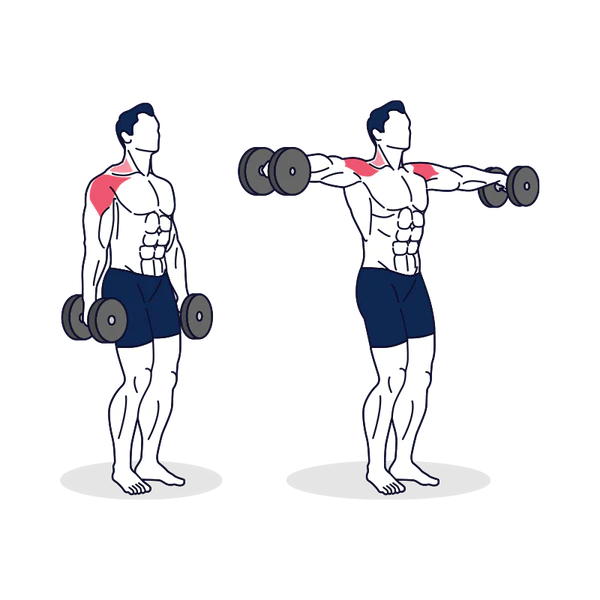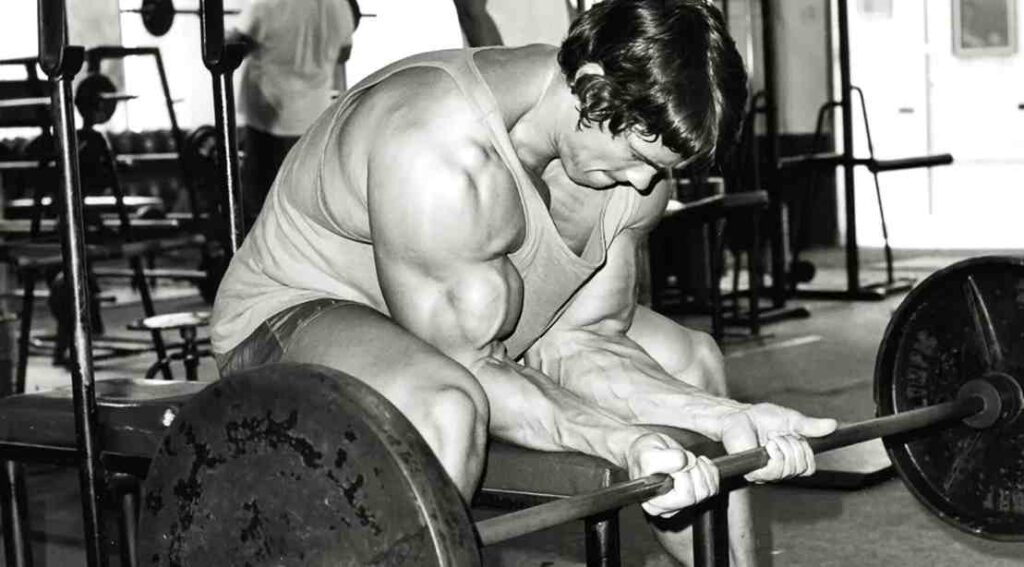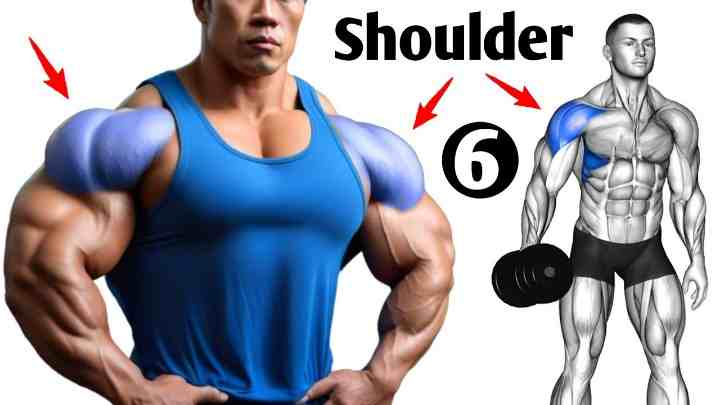Do you ever find that instead of feeling the burn in your shoulders during lateral raises, it’s your traps that seem to be doing all the work? You’re not alone. Many of us have experienced this mysterious sensation, where what should be a shoulder-focused exercise turns into a trap-tensing ordeal. But fear not, there’s a reason behind this unexpected muscle engagement. Understanding why your traps get involved in lateral raises can not only improve your form but also maximize the benefits of this popular shoulder exercise.
We’ll explain why your traps might be on fire during this exercise and give you tips on how to focus more on your deltoids. Whether you’re just starting out at the gym or you’ve been lifting for years, this guide will help you get the most out of your shoulder workouts.
The Anatomy of the Shoulder Muscles
The shoulder is a complex joint that allows for a wide range of motion, and it’s supported by a group of muscles that work together to facilitate movement. During lateral raises, the primary muscle engaged is the medial deltoid, which is responsible for lifting the arm away from the body in the frontal plane.
Here’s a breakdown of the shoulder muscles involved in lateral raises:
1. Deltoid Muscle
The deltoid is the primary muscle targeted during lateral raises. It has three distinct heads, each with different functions:

- Anterior Deltoid (Front): Located on the front part of the shoulder, it is responsible for shoulder flexion and internal rotation.
- Lateral (Middle) Deltoid: Positioned on the side of the shoulder, it is primarily responsible for shoulder abduction, which is the main movement during lateral raises.
- Posterior Deltoid (Rear): Found on the back of the shoulder, it aids in shoulder extension and external rotation.
During lateral raises, the lateral deltoid is the main muscle activated to lift the arms away from the body.
2. Trapezius Muscle
The trapezius (traps) is a large muscle that extends from the neck down to the mid-back and out to the shoulders. It has three parts:

- Upper Trapezius: Involved in elevating the scapula (shoulder blade), such as when shrugging the shoulders.
- Middle Trapezius: Responsible for retracting the scapula, pulling the shoulder blades together.
- Lower Trapezius: Depresses the scapula, pulling it downward.
During lateral raises, the upper trapezius can become overactive, especially if the shoulders are shrugged, leading to the engagement of the traps.
3. Rotator Cuff Muscles
The rotator cuff is a group of four muscles that stabilize the shoulder joint:
- Supraspinatus: Assists the lateral deltoid in shoulder abduction.
- Infraspinatus: Responsible for external rotation of the shoulder.
- Teres Minor: Also aids in external rotation.
- Subscapularis: Responsible for internal rotation.
While these muscles provide stability during lateral raises, they are not the primary movers.
When performing lateral raises, it’s important to maintain proper form to ensure that these muscles are engaged correctly and to prevent injury. The movement should be controlled and deliberate, with a focus on using the medial deltoid to lift the arms out to the sides until they are parallel to the floor.
SHOP FOR THE ADJUSTABLE DUMBBELL SET ON AMAZON
By understanding how these muscles function during lateral raises, you can perform this exercise more effectively and target your shoulder muscles for optimal development.
How to Do Lateral Raises

Here’s a step-by-step guide to performing lateral raises correctly:
- Begin by standing straight with your feet roughly hip-distance apart. This stance will provide a stable base for the exercise.
- With a dumbbell in each hand, stand with your arms by your sides. Your palms should be facing inward.
- Before you start lifting, brace your core muscles. This will help maintain proper posture throughout the exercise.
- Keeping your elbows slightly bent, lead with your elbows and raise your arms out to the sides. The movement should be controlled and steady.
- Once your arms are parallel to the floor, pause for a moment at shoulder height. Ensure that you’re not shrugging your shoulders or using momentum to lift the weights.
- After the pause, slowly lower your arms back down to the starting position. Keep the movement controlled and avoid letting the weights drop quickly.
- Perform the desired number of repetitions, maintaining good form throughout each set.
SHOP FOR THE RESISTANCE BAND ON AMAZON
Remember, the key to effective lateral raises is to focus on the lateral deltoids and avoid using momentum or swinging the weights. Keep your movements smooth and controlled for maximum benefit.
Common Mistakes in Lateral Raises
When performing lateral raises, several common errors can lead to the unintended engagement of the trapezius muscles instead of the intended deltoids. Here are some of those frequent mistakes and how they cause trap activation:
- Lifting Too High: Raising the arms above shoulder level can cause the upper traps to take over. To target the deltoids effectively, lift the arms just to shoulder height.
- Using Too Much Weight: Heavy weights can cause form breakdown, leading to the traps helping to lift the load. Using a manageable weight ensures the deltoids do the work.
- Shrugging Shoulders: Elevating the shoulders during the lift engages the traps. Focus on keeping the shoulders down and relaxed throughout the movement.
- Swinging the Arms: Using momentum to lift the weights recruits the traps and other muscles. Perform the exercise slowly and with controlled movements to isolate the deltoids.
- Incorrect Arm Position: Allowing the arms to drift too far forward or backward can shift the emphasis away from the middle deltoids. Keep the arms slightly in front of the body, in line with the shoulders.
- Poor Posture: Hunching forward or arching the back excessively can cause the traps to activate. Maintain a neutral spine and stand tall with a slight bend in the knees.
Importance of Carbs After Exercise
By avoiding these common mistakes and focusing on proper form, you can ensure the lateral raises effectively target the deltoids without unnecessary engagement of the traps.
Why Traps are Activated in Lateral Raises
The traps are often activated during lateral raises due to several reasons related to anatomy, technique, and muscle imbalances. The trapezius muscles, especially the upper portion, play a significant role in stabilizing and moving the shoulder girdle. When performing lateral raises, if the technique is not precise—such as lifting the arms too high, using excessive weight, or swinging the body—this can cause the upper traps to engage more to assist with the movement.
SHOP FOR THE WORKOUT GLOVES ON AMAZON
Additionally, if the deltoid muscles, particularly the middle deltoids, are weak or underdeveloped, the traps may compensate to help lift the arms. Poor posture and alignment, such as rounded shoulders or a forward head position, can also lead to increased trap activation. Developing a better mind-muscle connection with the deltoids, maintaining proper form, and addressing any muscle imbalances through targeted strengthening and corrective exercises can help reduce unnecessary trap involvement in lateral raises.
How to Correctly Isolate Deltoids
Here are some tips and exercises to effectively isolate the deltoids:
Tips to Isolate the Deltoids
- Use Lighter Weights: Using lighter weights allows for better control and focus on the deltoids, reducing the likelihood of recruiting the traps and other muscles.
- Control the Movement: Perform exercises with a slow and controlled tempo. Avoid using momentum to lift the weights, which can engage other muscles.
- Maintain Proper Posture: Keep your chest up, shoulders back, and spine neutral to ensure the deltoids are doing most of the work.
- Avoid Shrugging: Make a conscious effort to keep your shoulders down and away from your ears. This helps prevent the traps from taking over.
- Mind-Muscle Connection: Focus on feeling the deltoids working throughout the movement. Visualize the muscle contracting and lengthening with each rep.
- Adjust Arm Position: Slightly bend your elbows and keep your arms at about a 30-degree angle in front of your body to maintain tension on the deltoids and minimize trap involvement.
Exercises to Isolate the Deltoids
1. Seated Lateral Raises
- Sit on a bench with your feet flat on the ground.
- Hold a dumbbell in each hand with arms hanging at your sides.
- Lift the weights to the sides until your arms are parallel to the ground.
- Slowly lower the weights back to the starting position.
2. Leaning Lateral Raises
- Stand next to a sturdy object (like a squat rack) and hold it with one hand.
- Lean away from the object to create a slight angle in your body.
- Hold a dumbbell in the opposite hand and perform lateral raises.
- The lean reduces the trap engagement and emphasizes the deltoids.
3. Single-arm Cable Lateral Raises
- Set the pulley at the lowest position on a cable machine.
- Stand sideways to the machine and hold the handle with the outside hand.
- Keeping a slight bend in your elbow, raise your arm to the side until it’s parallel to the ground.
- Slowly return to the starting position.
4. Reverse Pec Deck Flyes
- Sit on a pec deck machine facing the pads.
- Grip the handles with your palms facing inward.
- Keeping a slight bend in your elbows, pull the handles back and squeeze your shoulder blades together.
- Slowly return to the starting position.
5. Front Raises
- Stand with feet shoulder-width apart, holding a dumbbell in each hand.
- Keeping your palms facing down, lift the weights to the front until your arms are parallel to the ground.
- Lower the weights back down with control.
6. Arnold Press
- Sit on a bench with back support, holding a dumbbell in each hand at shoulder height with palms facing you.
- As you press the weights overhead, rotate your palms to face forward.
- Reverse the motion on the way down.
7. Dumbbell Press with a Twist
- Sit on a bench with back support and hold a dumbbell in each hand at shoulder level.
- Press the weights overhead while rotating your wrists so your palms face each other at the top.
- Reverse the motion on the way down.
Comparing Arnold Presses and Lateral Raises
By incorporating these tips and exercises, you can effectively isolate and target the deltoid muscles, improving shoulder strength and aesthetics while minimizing unwanted trap engagement.
The Role of Weight and Repetitions
The choice of weight and the number of repetitions during an exercise like lateral raises can significantly influence which muscles are activated and to what extent. Here’s how:
- Weight Selection: The amount of weight you choose to lift can determine the primary muscles engaged during the exercise. Lighter weights with higher repetitions tend to target the endurance of the muscles, while heavier weights with fewer repetitions focus on strength and hypertrophy. For lateral raises, using a weight that allows you to perform 12-15 repetitions with good form will primarily engage the deltoids.
- Number of Repetitions: The number of repetitions you perform can also affect muscle activation. Higher repetitions (15-20) with lighter weights can increase the time under tension for the muscles, leading to improved endurance. Conversely, lower repetitions (6-8) with heavier weights can lead to greater muscle fiber recruitment, which is beneficial for building strength and size.
- Muscle Activation: When performing lateral raises, the goal is to target the deltoid muscles. However, if the weight is too heavy or the form is incorrect, other muscles such as the trapezius or rotator cuff may become more active. It’s important to find a balance where the deltoids are the primary movers without overworking the traps.
- Movement Tempo: The speed at which you perform each repetition can also influence muscle activation. A slower tempo increases time under tension, which can lead to greater muscle growth and strength gains. A faster tempo may be more suitable for power development.
In summary, selecting an appropriate weight and number of repetitions is crucial for effectively targeting the desired muscles during lateral raises. It’s important to adjust these variables based on your fitness goals and ensure proper form to maximize muscle activation and minimize the risk of injury.
FAQs
Q 1. How often should I perform lateral raises in my workout routine?
Ans. This can vary depending on your fitness goals and current fitness level. However, a common recommendation is to include lateral raises in your shoulder workouts 1-2 times per week.
Q 2. What are some signs that I might be lifting too heavy during lateral raises?
Ans. Signs that you might be lifting too heavy include the inability to maintain proper form, using momentum to lift the weights, feeling strain or discomfort in your neck or traps, and not being able to complete your intended number of reps.
Q 3. Can lateral raises help improve posture?
Ans. Yes, lateral raises can help improve posture by strengthening the shoulder muscles, which can help keep your shoulders back and chest open. However, it’s important to perform them with proper form to avoid injury.
Q 4. Are there any modifications to the lateral raise for beginners or those with shoulder injuries?
Ans. Yes, beginners or those with shoulder injuries can perform lateral raises with lighter weights or use resistance bands. It’s also possible to perform them seated or with a slight bend in the elbows to reduce strain on the shoulder joint.
Q 5. What are some stretches that can help loosen up my shoulders before doing lateral raises?
Ans. Some effective shoulder stretches include the cross-body shoulder stretch, the door frame stretch, and the overhead shoulder stretch. These can help increase flexibility and range of motion in your shoulders, preparing them for exercises like lateral raises.
Conclusion
In conclusion, feeling the burn in your traps during lateral raises is often a sign of incorrect form or overcompensation due to heavy weights. By understanding the anatomy of the shoulder, maintaining proper form, and avoiding common mistakes, you can effectively target the intended muscles – the deltoids. Remember, the goal of lateral raises, like any exercise, is not just to lift the heaviest weights but to engage the correct muscles and improve overall fitness. So, the next time you perform lateral raises, keep these points in mind and make the most out of your workout.

Good day, and welcome to Fitthour. My name is Shubham Vijay, and I am a certified personal trainer and nutrition coach with 6 years of experience in the fitness industry. At Fitthour, we specialize in types of training, such as strength training, cardio, or HIIT, and our mission is to help clients achieve their fitness goals and improve their overall health.



